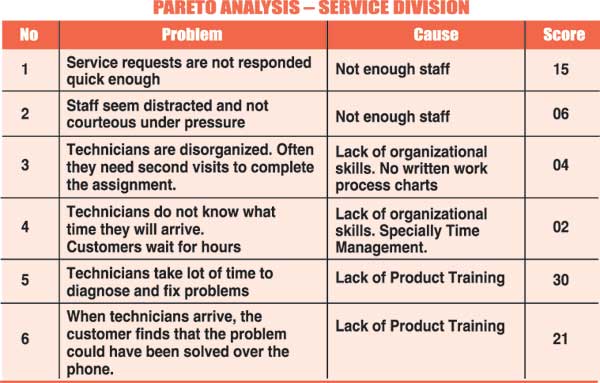24 Feb 2014 - {{hitsCtrl.values.hits}}
(1)(2)(1).jpg)
.jpg)
(4)(1)(1)(1)(1).jpg) There are many problem-solving techniques available to managers and most of them are powerful tools for reaching a solution. However, one stands out as the power tool to use for deciding ‘which’ problems to solve; ‘Pareto Analysis’. It sorts the vital few from the trivial many. It is also known as ‘80/20 rule’, suggesting that 80 percent of the effect comes from 20 percent of causes.
There are many problem-solving techniques available to managers and most of them are powerful tools for reaching a solution. However, one stands out as the power tool to use for deciding ‘which’ problems to solve; ‘Pareto Analysis’. It sorts the vital few from the trivial many. It is also known as ‘80/20 rule’, suggesting that 80 percent of the effect comes from 20 percent of causes.
25 Nov 2024 4 hours ago
25 Nov 2024 5 hours ago
25 Nov 2024 5 hours ago
25 Nov 2024 7 hours ago
25 Nov 2024 7 hours ago